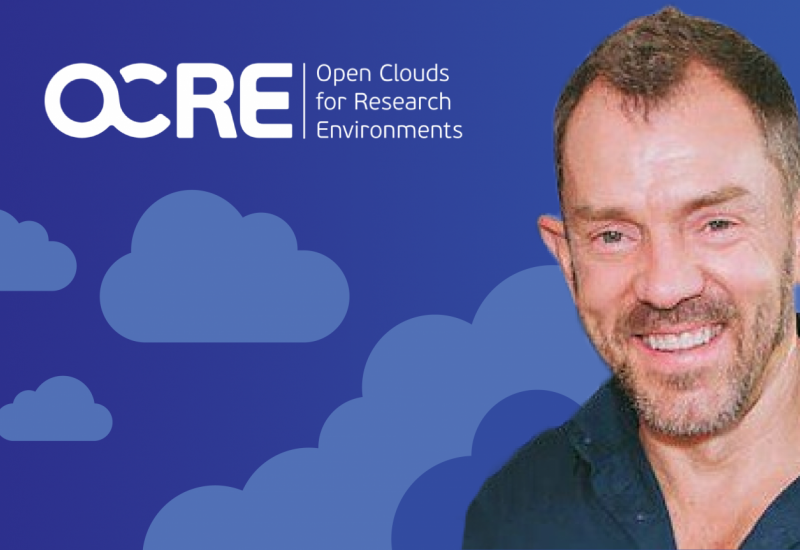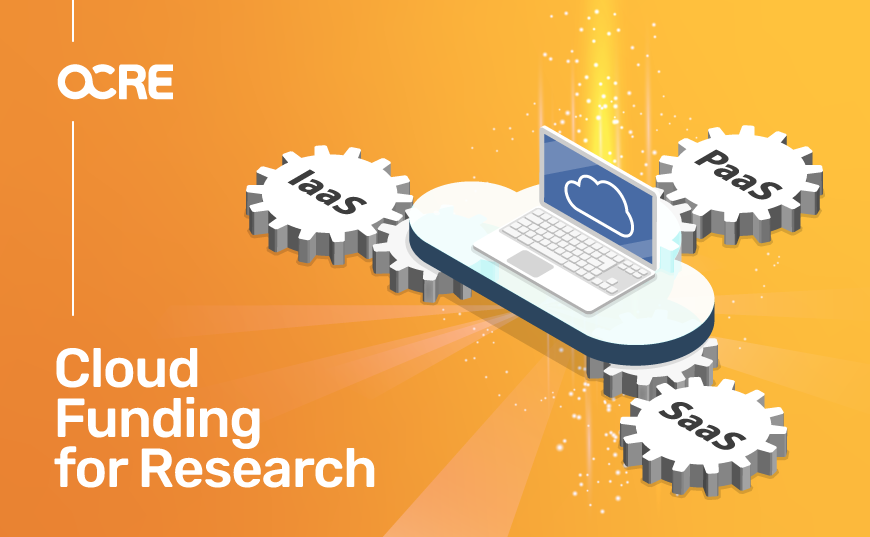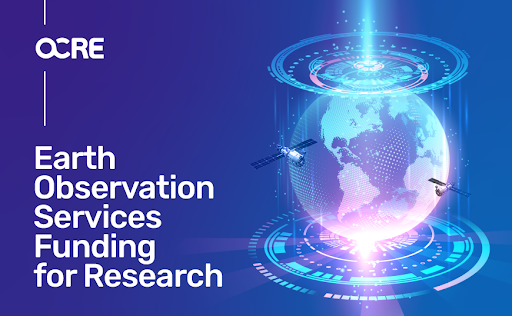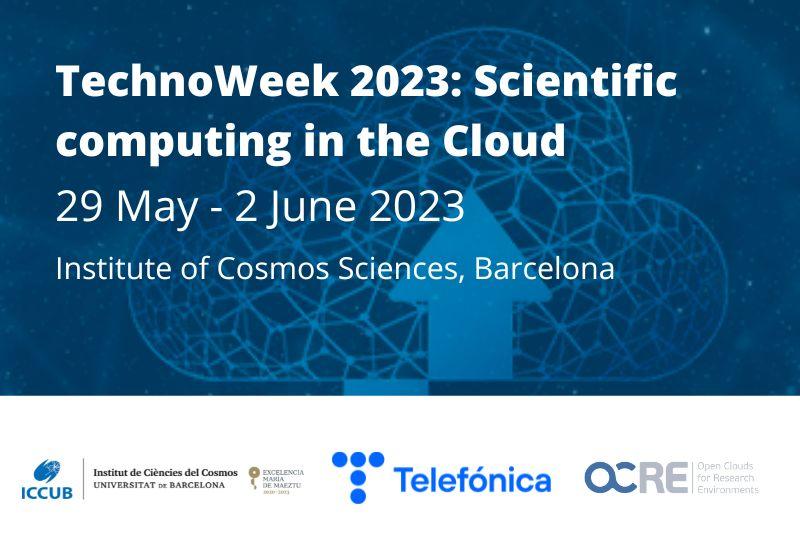
October 12,2020
Insights

Published by GEANT in September 2020. Republished with permission.
Dave Heyns is the project director for OCRE (Open Clouds for Research Environments), the project set to accelerate cloud adoption in the European research community. CONNECT had a chat with him to learn about the status of the OCRE IaaS+ tender and its related open funding calls, its role in EOSC, the opportunities it offers for both researchers and service providers, and how the project will redefine cloud consumption in Europe.
Interview by Leonardo Marino, GÉANT
Dave, when did you start working at GÉANT and what is your background?
I started working at GÉANT in June 2019, moving from Dimension Data (NTT Global) in the UK, which was one of the IaaS providers for GÉANT on the 2016 framework. As their group Director for Research, Education and Healthcare, I focused on driving the adoption of cloud and related services in the global research and education community, working with the likes of Internet2 in the US, AARNET in Australia, and with NRENs all over the world. Specifically, we helped NRENs connect their networks to Cloud Points of Presence (POPs) and developed procurement frameworks so that NREN communities could easily consume cloud related services via their local network providers. I also come from a R&E tech background, as prior to that I had been the head of the solutions enterprise at the University of Cape Town for 12 years.
Tell us about OCRE, what’s the aim of the project and what are its current activities?
The OCRE project has two primary ambitions:
- Making Cloud and related digital services easily consumable by the Research Community in Europe;
- Driving the adoption of these services and promoting them within the research communities, funding related initiatives and producing compelling case studies.
OCRE will provide access to commodity cloud services and at the same time seek particular solutions for Earth Observation (EO) services, providing added value to Copernicus data.
How does OCRE intend to achieve its objectives?
OCRE started in January 2019, focusing on the procurement of cloud services on behalf of the European research community and executed a cloud tender which registered an unprecedented response from the market.
Now we will engage in contracts with suppliers of commercial cloud services in each of the 40 participating countries, favouring suppliers that have structures in those countries that can provide the best possible support for the R&E community. This way researchers can consume services from local resellers of hyperscale platforms as well as original infrastructure providers (OIPs) best able to support their needs.
Our pan-European procurement is a framework that will run for four years, in which GÉANT will act as a Centralised Procurement Body (CPB), while institutes will be able to easily consume services by the means of a Call off Agreement through the local NREN, and even to make use of OCRE’s support and expedited processes in case they need to run mini-competitions between suppliers in their countries.
Meanwhile, on the Earth Observation side, we are registering a Dynamic Procurement System (DPS), on which existing suppliers of EO Cloud services will register through affiliations with EARSC and ESA, the European Space Agency. This procurement system is quite different from the 4-year fixed framework, as its dynamic nature will allow suppliers to continuously register and onboard their commercialised products as they develop them, throughout the duration of the DPS. After the initial selection, through a process of evaluation and scoring, we will ask research projects themselves to describe the specific Earth Observation services that they require, and this will allow us to publish their requirements on the DPS. Basically, we will run mini competitions and procure services on behalf of the projects.
In both calls we will be reaching out to research institutes for projects where their activities and outcomes could be significantly accelerated through cloud services. Our final aim is to develop compelling case studies that the OCRE project can leave as a legacy for the broader EOSC environment, that will continue to motivate the consumption of cloud services based on their added agility and enhancement of research activities and outcomes.
What added value can cloud services – and especially commercial cloud – offer to NRENs and to the R&E community? Will OCRE impact the way research is done in Europe?
Opportunities for NRENs are substantial. OCRE provides real tangible benefits to the R&E community and significantly enhances the NRENs’ relevance in terms of Cloud and Digital Services support for their local institutes.
In that OCRE is primarily focused on the research community, I will discuss cloud benefits in terms of their needs. Traditionally researchers procured physical servers through grant funding, that were then simply installed under their desk. Now however, virtual machines, virtual environments, and a whole host of cloud services have become more accessible. Commodity cloud services undoubtedly give you a lot more agility on compute capabilities and data storage services, for which today there is a high need, and that you can easily consume, pay for as they are being consumed and then – when you completed your research – simply shut down and stop paying for them. That’s obviously a lot more efficient than buying a physical server and investing in the hardware, that at the end of your project will probably lie dormant.
There are many different advantages of moving towards cloud services.
Research activities often require High Performance Compute services and a researcher would previously need to get big research workloads to a HPC centre. With current network capabilities and improved bandwidth, the researcher can simply consume the compute services and compute capabilities of hyperscale cloud platforms, which are increasingly more agile and comparable in compute capacity to the traditional HPC systems.
Regarding data storage instead, one of the biggest benefits to research communities, is scalability. You will never need to buy additional storage, you can literally just scale up and consume, and then stop paying when you stop consuming these services. Moving your data into a hyperscale cloud storage would also help us tackle the “R” in the FAIR data principles, so the reusability of your research data. Certain of these solutions, cloud storage for example, come at a fractional cost and – once requested – may take 24 to 48 hours to come online.
Additionally, most cloud platforms have become more sophisticated and host marketplaces, where you can access and consume new cloud based capabilities such as platform support for advanced analytics, machine learning, algorithms that provide you insights through AI. As you see it’s no longer just compute and storage.
With OCRE, research institutes don’t have to run time consuming and complex procurements and competitive tenders, instead they can easily consume services through the OCRE framework. This is a lot more significant than it sounds because these cloud services have been carefully vetted by the OCRE team: they are compliant in terms of GRPR and ISO standards, and they are connected to the GÉANT and NREN networks. CERN, in collaboration with the ARCHIVER project, provides the test suite to make sure that these services are compliant. Finally, as it was requested through the procurement, providers should waive any ingress and egress charges, so the institutes won’t have to pay for all the additional bandwidth of cloud providers’ networks (be they Microsoft, Google, Amazon, or European providers as CloudSigma or TI Sparkle).
There is also plenty of country-specific support and training materials on the use of those cloud platforms. In fact, some of our funding will allow for consulting from cloud companies, to help you get going. The NRENs will also be able to develop the relationship between the market, the supplier and the researchers and to host training and webinars for suppliers, to broker many of those facilities and drive their own relevance in terms of above the net services.
We are excited on the NRENs’ behalf, as we have seen through the 2016 GÉANT framework that when NRENs strategically commit resources and effort to supporting cloud activities, cloud consumption scales up dramatically (e.g. in the Netherlands, where it has doubled annually since the framework has been in place).
On a different perspective, how do commercial providers benefit from OCRE’s framework agreements?
Commercial providers are included on a contracted vendor list so they don’t have to tender their services at the individual institutes: they are already on a cloud framework so that institutes can easily consume their services. Every bid response that needs to go through a complex public sector tender process requires huge effort from the supplier, and they will no longer have to engage this way as they would already have been awarded a contract through the OCRE tender.
OCRE opens up their world massively to the R&E community through GÉANT and NRENs, and it provides a platform for the suppliers to penetrate the market and present their products and solutions at NREN conferences, webinars and other community engagements.
The initial phase of OCRE was marked by an intensive requirements gathering campaign. What kind of interest did you register from researchers and providers?
Technology drags us along with it and effectively charts our course. All research institutions are already consuming cloud services at scale in some form or another. They know they need those services, but they also need a better way of acquiring and consuming them. Their on-premise data centers have become expensive and difficult to manage, and their DC staff no longer wants to consume out of an environment of aging physical infrastructure, instead they want to go into virtual environments and consume virtual services, as this gives them more agility and allows them to better support their institutions.
The past 18 months have been very dynamic in terms of outreach and communications activities.
We invested much energy in pre-procurement, both through the GÉANT partner relationship team and through OCRE, socialising the framework within the market and asking NRENs to socialise the funding calls with opportunities for their institutes. Our communications partner Trust-IT Services did a great job on reaching out to both the supplier and researcher communities, while also helping us strategically in setting up the Expert Advisory Board. The RHEA Group and EARSC supported the interaction between the research communities and established suppliers of EO services. Finally, CERN took responsibility for distributing OCRE vouchers over the course of next year to individual researchers, through the Marie Curie Alumni Association, Eurodoc, and other associations they work closely with.
We gathered around 10.000 institutes across 40 countries eligible to procure cloud services under the OCRE framework. From a market perspective it’s a very big opportunity.
OCRE is also part of the larger European Open Science Cloud initiative. How does OCRE fit into the complex EOSC ecosystem?
OCRE gives a new meaning to the world Cloud in EOSC. The project is part of the very diverse EOSC landscape, however EOSC has not yet really considered where commercial services fit within its context. This will need to be defined by the Rules of Participation Working Group that I recently joined, because the research community is very interested in the agility and flexibility that commercial services provide.
Commercial solutions are evolving at a very rapid rate. Every time you pick up your cell phone there is a new app, that does the same old thing in a much better way, and it’s far easier to use. That is the nature of commercial services: it’s a very robust and agile market that keeps investing in development and innovation and that’s why I believe large e-infrastructures will need to coexist with commercial services, or cease to exist at all.
EOSC is still quite conceptual. What OCRE offers are real tangible solutions to many of the EOSC questions and requirements, to be delivered in short term, with ready to use and consumable commercial services available by the end of 2020.
As a starting point, OCRE signed a MoU with EOSC-hub and we are now looking at how we will make our services available and list them on the EOSC Portal Marketplace. Specifically, we are discussing how to make space for commercial services on a marketplace that is currently focused on services that EOSC provides through its own e-infrastructures. The position of the RoP Working Group is to consider services being free at Point of Demand, but based on the fact that a lot of research is done on grant funding, I am not sure that this would be the only way… I actually think that the research community should be able to procure all the available services and do it through EOSC. I’m sure we will be challenging some of the dominant ideologies in the next six months.
The OCRE IaaS+ tender that closed at the end of June, is certainly among the major highlights of the project, having an estimated value of €600 million. Could you tell us more about it and update us on its current status?
As I said earlier, last year we engaged with the market and identified all the interested parties – many through the NRENs and their institutes, but also through big research entities like CERN. Now we are nesting them to procure through the NRENs and through country-based lots. Again, we are talking about 10.000 institutes eligible to procure of this framework, so it’s a very big community for the suppliers to focus on and a huge tender in terms of scope and scale.
The tender ran from April to June and we ended up with having close to 1100 bids by almost 100 suppliers across the 40 participating countries. As The OCRE Cloud tender only allows one supplier of a Original Infrastructure Platform (OIP) in any country, evaluating and scoring all of those bids will require a huge effort from the GÉANT Contract management team until the end of November, but we are making our life easier by building tools to cope with this huge workload. Nonetheless, we anticipate that the contracts for all 40 lots will be in place by the end of December 2020.
Specifically, how does the OCRE IaaS+ framework agreement expand and update the GÉANT IaaS Framework agreement? And how will OCRE influence GÉANT’s activities in the field of cloud services?
This is a very interesting question because it does speak to my actual day job. A really important point – that has generated some confusion – is that all the contracts in the 2016 GÉANT IaaS framework will come to an end in December 2020. As a convenient consequence of the timing of the OCRE project, the IaaS+ contracts made available through the OCRE framework will seamlessly support any new IaaS consumption, effectively providing for a continuation of the previous framework. Contracts supporting consumption that is already taking place under the GÉANT framework will continue to run their course. All of the entities that were eligible to procure of the GÉANT framework remain eligible to procure via the OCRE frameworks. They will also have more choice regarding cloud related services, because the original infrastructure providers now offer more than just IaaS and compute and storage services.
The Cloud managers across Europe involved in the GN4-3 project (WP4) will facilitate training activities, webinars, marketing and excellent procurement support for the use of the digital services on the OCRE framework.
The next few months will be quite busy for OCRE, what should we particularly keep an eye on?
Keep an eye open for the suppliers that will get awarded and will start appearing on NREN Cloud Catalogues and in the GÉANT Cloud Catalogue. It will be quite interesting to see who supplies which service in each country. Similarly, when we launch the Dynamic Procurement System (DPS), we will also see which suppliers of Earth Observation Services will be among early registrants.
Our first funding call for Cloud services was just launched on 15 September and it will remain open for six weeks, closing at the end of October. The research community was expecting it: more than 70 institutes have already registered their interest and we predict that number to increase dramatically now that the call is open. The funding team will identify projects that we think make for great case studies, have a “coolness factor”, are covering a significant research discipline (e.g. research on Covid), and that demonstrate how digital services have accelerated their activities and improved their outcomes. Once we have selected the projects, the OCRE External Advisory Board (EAB) – a body made by representatives of the broader research community – will ensure transparency by validating our decision.
Then, the first funding call for EO Services will be launched on 14 October, once the DPS is registered. This call will provide a great opportunity for scientists that use Earth Observation data. What is really interesting, is that we are not just talking about EO Sciences but about any science or discipline that consumes EO data (e.g. all the sciences that focus on planning, environment, travel, and so on). There is so much information coming down from satellites, and we want to make it available for researchers.
How will OCRE ensure long term sustainability of its achievements?
Once we have the procurements in place – both the cloud framework and the EO DPS – we will be running a series of 3 calls across the next year, to solicit projects that will consume services available through the OCRE frameworks. OCRE will need time for the research projects that we fund to complete their research, at least to a point to which we can start creating compelling case studies. As such, we anticipate that we will be running until mid-2022.
Moreover, the OCRE frameworks will definitely run longer than the OCRE project will, as even once our project funding initiatives are complete, the research community will continue to procure services through the OCRE frameworks.
To conclude, how do you imagine the future of cloud in European and global R&E?
These days no research can really take place without creating data and requiring a certain level of computation. During the current global pandemic, researchers are moving to remote working and becoming heavily dependent on cloud services to do that. In fact, all the online services that allowed this shift are cloud-based by definition: video conferencing itself is a cloud service!
Cloud services allow global collaboration, and that is fundamental in the field of research. I am sure that European researchers will consume more and more commodity commercial cloud services and increasingly rely on bespoke cloud services focused on their specific realm and on platforms that allow computations and advanced analytics and that support the use of machine learning, robotics, artificial intelligence – to name a few.
I would really like OCRE to become central to the short-term strategies regarding above the net services of both GÉANT and the NRENs, for which it provides huge opportunities, and to become the bridge to bring both the researchers and the NRENs closer to EOSC. It’s a very exciting project to be working on.



